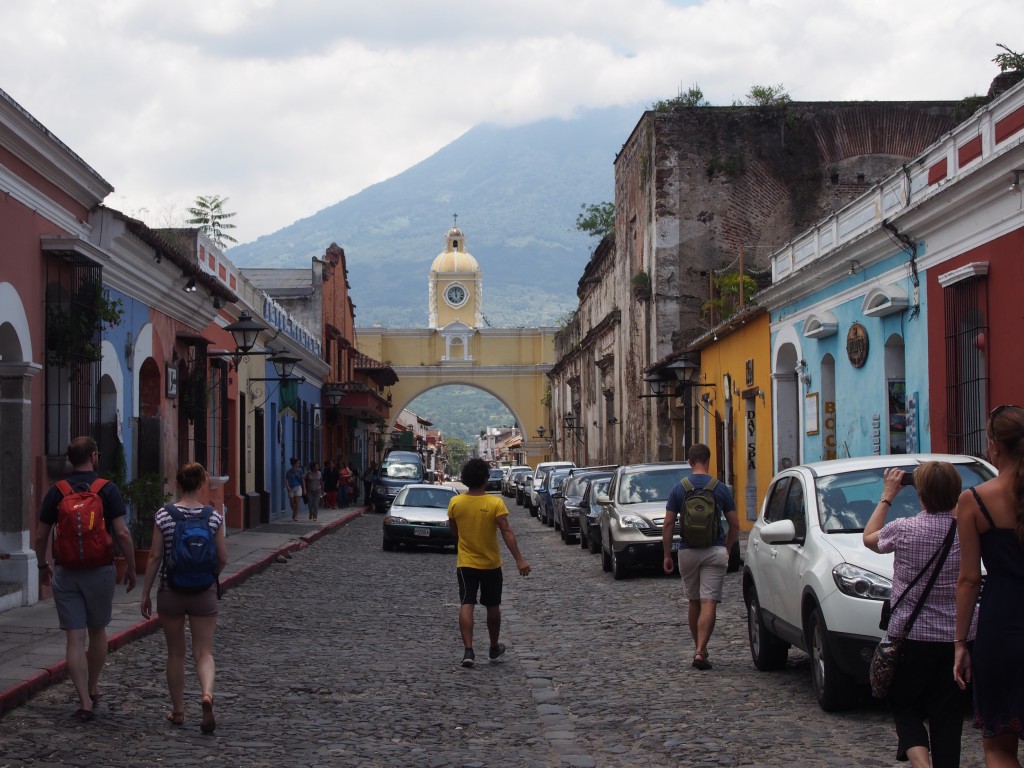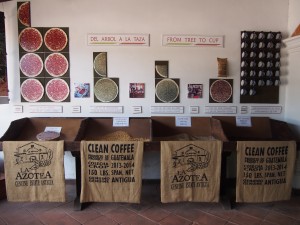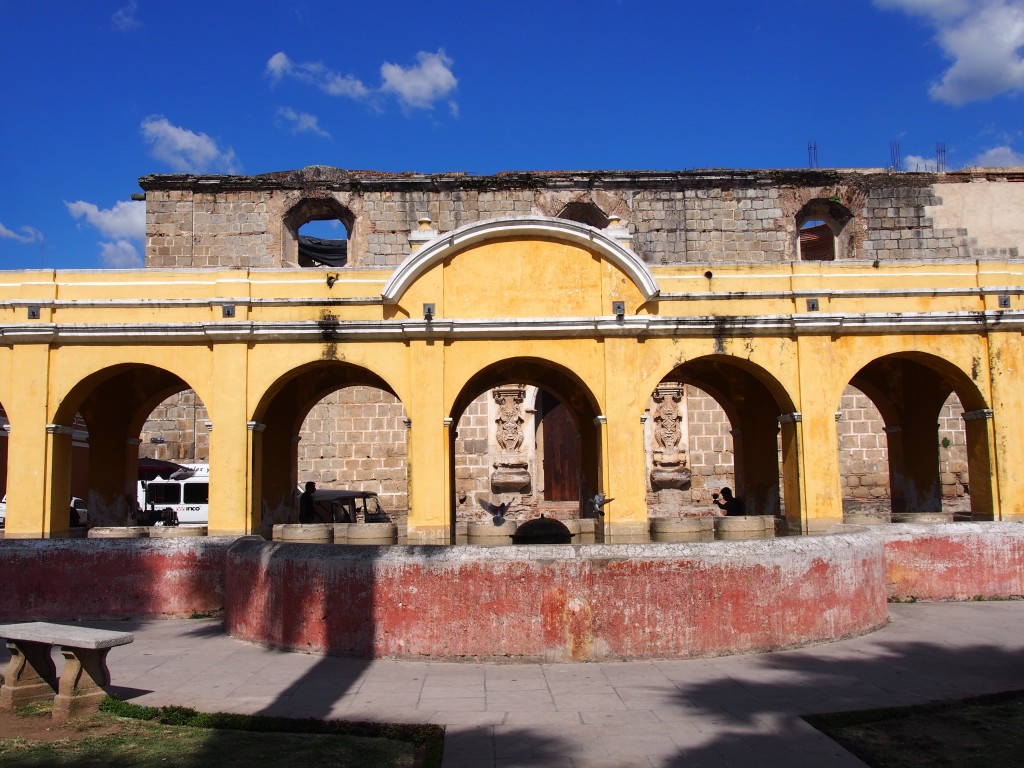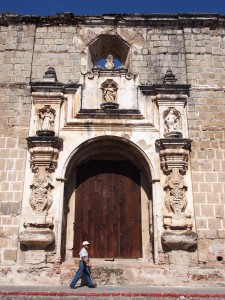 Antigua is a UNESCO World Heritage site in the Guatemalan highlands at 1500 metres above sea level. It was founded in the early 16th century. Like Lake Atitlan it is in an earthquake prone region surrounded by volcanos. There was a large scale earthquake in 1773 which destroyed almost the entire city. Much of Antigua was rebuilt, though some of the old monuments remaining.
Antigua is a UNESCO World Heritage site in the Guatemalan highlands at 1500 metres above sea level. It was founded in the early 16th century. Like Lake Atitlan it is in an earthquake prone region surrounded by volcanos. There was a large scale earthquake in 1773 which destroyed almost the entire city. Much of Antigua was rebuilt, though some of the old monuments remaining.
The city has an Italian/Spanish influence and like so many other towns has such character in the buildings and cobbled streets. It’s just fantastic to wander and explore. I spent quite some time getting lost in the streets and have loads of awesome pictures of the different streets, doorways and ruins.
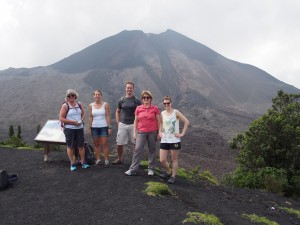 Pacaya Volcano
Pacaya Volcano
For US$20 and a national park entrance fee of 50 quetzales, a group of five of us did a half day tour to the Pacaya Volcano. It’s roughly a 1.5 hour bumpy drive from Antigua.
The hike is not overly challenging and is 6 kilometers return. As you might imagine the hike there was uphill and the return was downhill. Despite having a terrible, uninterested guide, the hike was pretty awesome and we were all glad we did it.
We thought we would be walking to the crater, but this was not actually the case. We walked to a viewing platform of sorts and then descended a short distance to the base of the 2010 lava flow.
It was interesting to see the lava flow and all the broken chunks of volcanic rock. At the very base there was a small hole in which we were able to roast marshmallows. Despite being quite some distance from the actual craters edge, it was incredible how hot the air coming from the lava flow was.
Coffee Plantation Tour
A group of ten of us booked a private tour to the Azotea Coffee Plantation. The transport cost 30 Quetzales and entrance to the plantation with guided tour was 50 Quetzales, all up the trip was approximately 2.5 hours.
The tour was throughly fascinating and we had a brilliant guide. I learned some very interesting things along the way.
Coffee was discovered accidentally in Ethiopia when a farmers goats ate the beans and then couldn’t sleep and were incredibly energetic. Coffee is rated in terms of quality and production. For quality the top three producers are Ethiopia, Kenya and Guatemala. For production, or quantity, the top three are Brazil, Vietnam and Columbia.
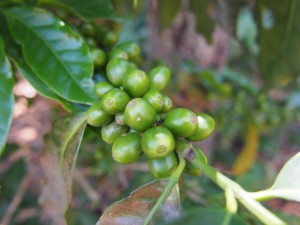 There are two main types of coffee, the first is Arabica which is grown in the shade, allowing the coffee to be a better quality, but it doesn’t produce a great quantity as it can only be harvested once a year. The second type is Robusta, which is grown in the sun and can be harvested twice a year, which leads to higher production quantities.
There are two main types of coffee, the first is Arabica which is grown in the shade, allowing the coffee to be a better quality, but it doesn’t produce a great quantity as it can only be harvested once a year. The second type is Robusta, which is grown in the sun and can be harvested twice a year, which leads to higher production quantities.
When coffee beans are red they are ready to be picked. This is called a coffee cherry. Each cherry contains 2 beans, though occasionally a cherry will contain just one bean, in which case it is referred to as peaberry coffee. The beans are stripped of their husks to access the bean itself, before being roasted. Beans are typically roasted to medium, medium dark or dark roast. Once roasted they are ready to be ground and prepared to drink.
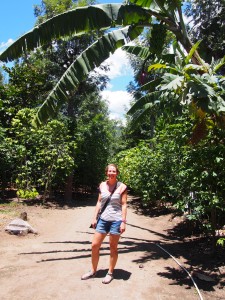 At the end of the tour we got the opportunity to taste a standard medium dark roast, which was a bit strong for me, and a peaberry coffee which had a more subtle flavour.
At the end of the tour we got the opportunity to taste a standard medium dark roast, which was a bit strong for me, and a peaberry coffee which had a more subtle flavour.
The plantation owner from the year 1912 onwards, Alberto Orive Del Pando has been quoted as having said “Coffee should be black as night, strong as passion, sweet as love and hot as hell”. I still like my coffee sweet and white, but I think he did a great job with the plantation as they continue to produce great coffee!

